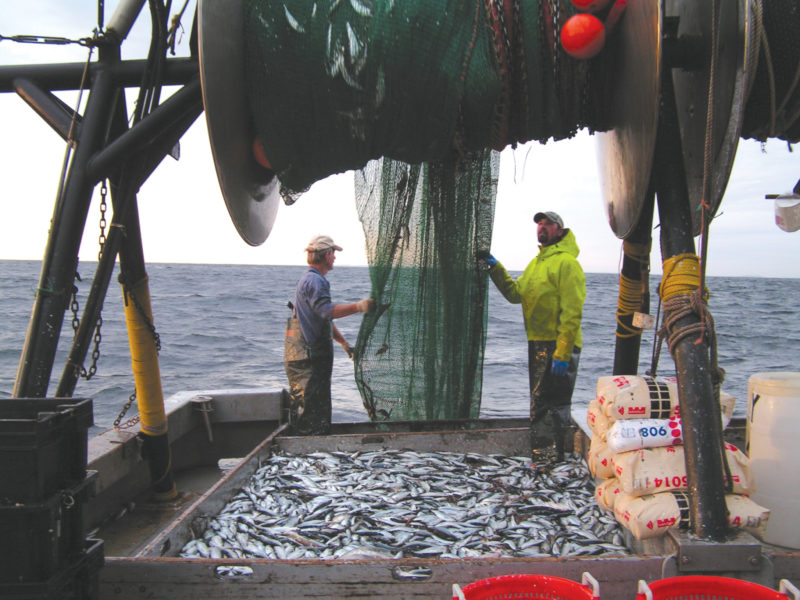As regulators consider alternatives to management of the Atlantic herring fishery — which extends from North Carolina to Maine — fishermen are cautiously hoping for a better year than recent ones.
In 2017, the New England Fishery Management Council released options that could affect the industry that provides food for consumption, fish oil and bait. The council will make a final decision this summer about possible changes regarding fishery catches and potential closures to address concerns about localized depletion and user conflicts.
Variation in the fishery, in terms of volume, area and season, is not uncommon, but what drives the swings depends on whom you ask.
In 2016, fishermen (mostly from Maine and Massachusetts) hit 60.4 percent of quota when they hauled in about 140 million pounds of herring — the lowest since 2002. But dockside, the catch was worth more than $28.8 million, among the highest value totals on record. In 2017, preliminary NOAA estimates indicate just 48.2 percent of herring’s annual catch limit was harvested from a quota just over 226 million pounds.
“Last year was a disaster of biblical proportions,” said Eoin Rochford, plant manager at Norpel, a New Bedford, Mass., herring and mackerel processor.
The 2018 annual catch limit is north of 222 million pounds, spread across four management areas and accounting for carryover of unharvested catch from the 2016 fishing year. As of late February, more than 14 million pounds had been caught.
“January was slow, but so far February has been good. It just remains to be seen how long it will be good for,” Rochford said at the time.
“The beginning of the year is generally slower than other seasons,” said Deirdre Boelke, the council’s herring coordinator. “Herring fishing traditionally takes place in Area 2 this time of year. So far, it is tracking pretty similar to last year.”
Some vessels also target mackerel this time of year, rather than herring.
“Mackerel catch,” added Boelke,” is much higher this year compared to last year, and is almost at 100 percent of that catch limit.” Last year, said Richford, mackerel bycatch was an issue and “this year, they’re seeing a good bit of mackerel mixed with herring. The problem is, the mackerel quota is so small now that mackerel could become a choke species and prevent our fleets from catching the targeted species.” Regulations like bycatch caps that affect fishing behavior, spawning closures, and observer availability all affect the herring catch.
Up in Maine, the season typically gets active in late March. “Last year, Maine’s lobster industry paid 25 to 35 cents a pound for bait herring,” said George Parr, a Maine seafood broker, “and food grade herring goes for 75 cents to $1 per pound off the boat. I’ll be ready for it.”







